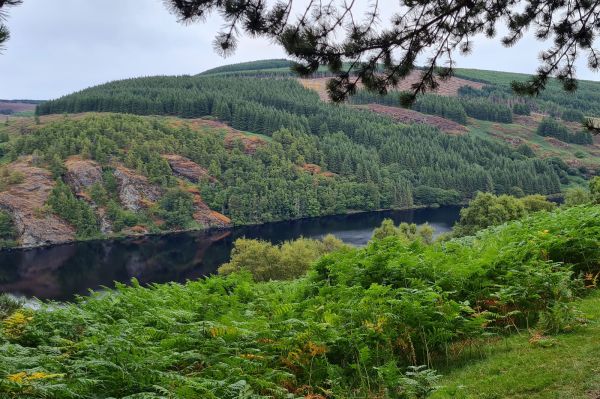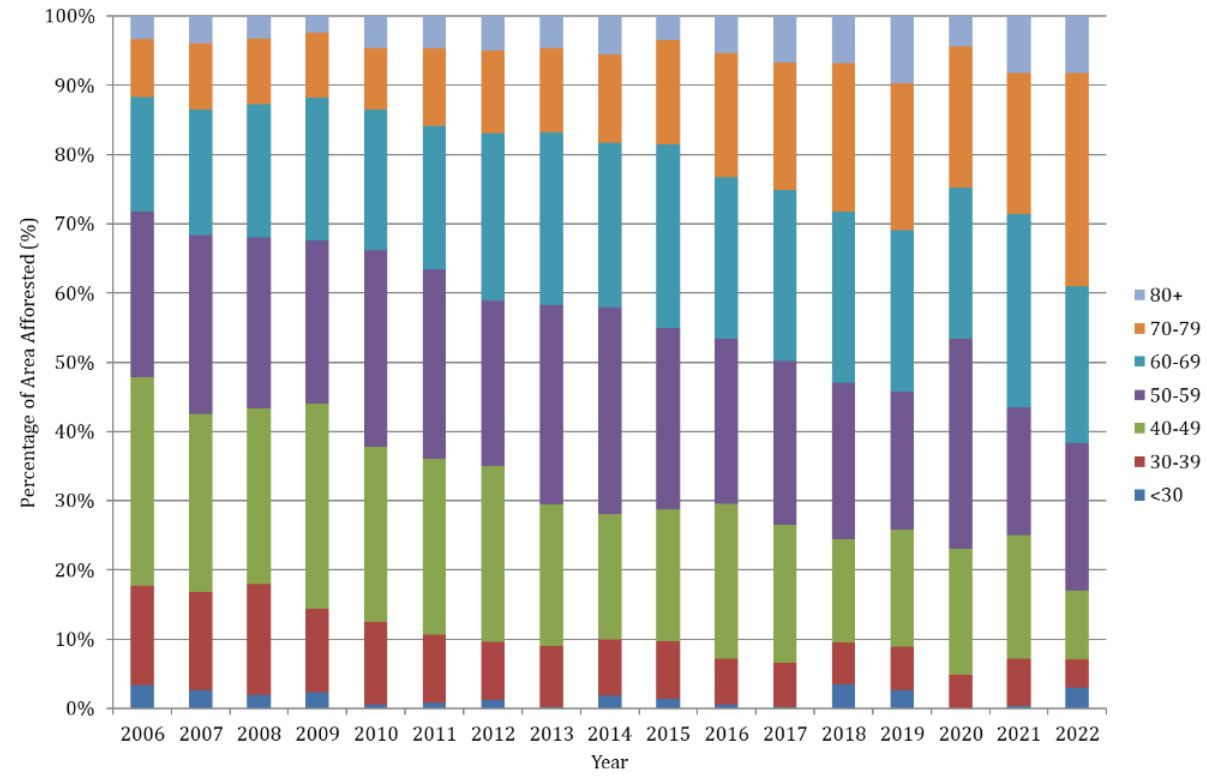A forest of statistics

Having suffered the almost complete denuding of the country’s forests during the 15th and 16th centuries, the country has gradually replenished its tree stocks over the past century to the extent that we now have a forest cover of 11 per cent. Add in hedgerows and other random arboreal growth and there is a legitimate claim that the totality of tree and hedge acreage covers up to 18 per cent of our land base. That is no small achievement, given the baseline in 1921 when tree cover accounted for a paltry one per cent of our land mass.
An active afforestation policy
The report confirms the strides that have been made, especially since the middle years of the last century. The balance between private afforestation and State-owned forests is reasonable and due credit should be given to Coillte and its predecessors for the success they have achieved in terms of planting large acreages of trees across the country. As a result of that and, latterly, more widespread private planting, the Irish economy has benefitted from the development of a viable timber-processing sector.

Forest area change since the foundation of the State, 1922-2022. Image: Forest Statistics Ireland Report.
A young forest
Compared to forests across Europe and further afield, Ireland’s forests are, for the most part, young. The report confirms that the majority, 70 per cent, of Ireland’s forests consists of trees that are 30 years old, or less. The age structure of the national forest estate differs according to ownership: 64.4 per cent of the public forest is aged 30 years or less; 89.3 per cent of the private (grant-aided) category is aged 30 years or less; and 45.3 per cent of the private (non-grant-aided) category is aged 30 years or less. These statistics show that until the last two decades of the 20th century, the majority of tree planting was undertaken by public bodies, now mainly under the Coillte umbrella. Private afforestation from the 1980s onwards surged ahead supported financially by the Irish government and the EU. Even State afforestation activity was relatively low up until the 1950s, and then gained momentum up to the year 2000. The successful outcomes from the financial supports introduced for private afforestation can be easily appreciated from the report’s statistics in that regard: 306,266 hectares (ha) of private forests were established between 1980 and 2022. A policy decision was made in the early 1990s to encourage an increased proportion of broadleaves in plantations and, on average, 19 per cent of all afforestation since that year has included deciduous species. Because of disease challenges among some tree species in latter years, there is a far more discretionary attitude in the choice of broadleaf trees being planted. Tree diseases such as Phytophthora ramorum (mainly affecting larch) and Hymenoscyphus fraxineus, or Ash dieback, now influence species diversity with neither of these tree species now being a viable option for planting.
Private forest profile
Rather than the large acreages planted by Coillte and its predecessors, the size of private, grant-supported areas planted between 1980 and last year was 8.6ha. Since 2002, only 20 per cent of afforestation parcels have been greater than 20ha. And in the last 10 years, no individual forestry application greater than 50ha has been established. Since 2001, all afforestation applications are screened to determine whether they require an environmental impact assessment (EIA) and in 2010, all developments over 50ha have been subject to a mandatory EIA. Presently, the report says, 32 per cent of the total afforested area between 1980 and 2022 has consisted of plantations greater than 20ha, 62 per cent are greater than 10ha and 74 per cent are greater than 7.5ha in size. These figures illustrate the fact that most planting has been carried out on privately-owned individual farms where all, or part, of any one farm has been devoted to forestry.
Since 1980, 82 per cent of the forests planted have been done by farmers. Since 1980, almost 24,000 individual private forest owners have received grant aid to establish their forests.

Size class distribution of private grant-aided afforestation, 1980-2022. Image: Forest Statistics Ireland Report.
The report also illustrates the decline in planting levels over the past decade. It amounts to a virtual collapse in new planting and the new forestry programme, a greatly enhanced version of previous programmes, financially, was specifically designed to reinvigorate planting in the coming years.

Area of applications received, technical approvals and actual afforestation. Image: Forest Statistics Ireland Report.
Forest owner age profile
While most of our Irish forestry is relatively young, the opposite is true of our forest owners. In 2022, 62 per cent of the area afforested was owned by people aged 60 years, or more, while 59 per cent of the total area that received premium payments was, again, owned by people aged 60 years, or more. This suggests an active mindset by older farmers with suitable land, deciding to take at least a step back from active farming, mainly drystock farming, and utilise their land for a more profitable and dependable
income stream through afforestation. Forestry, for many of this age cohort, is akin to a dependable pension pot, with guaranteed annual income and an increasingly valuable asset, literally growing out of the ground.

Age profile of forest owners at the time of when their land was afforested, 2006-2022. Image: Forest Statistics Ireland Report.




